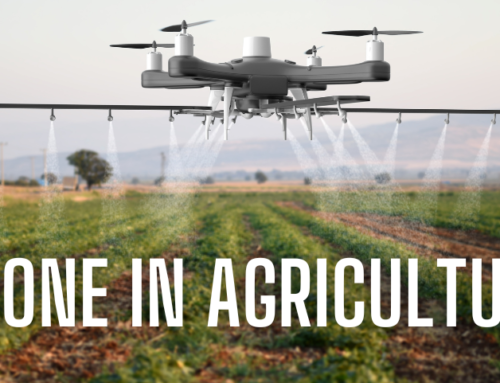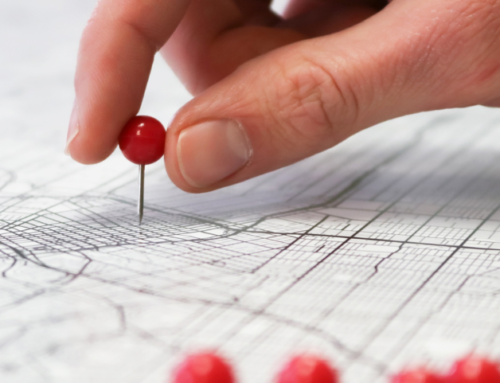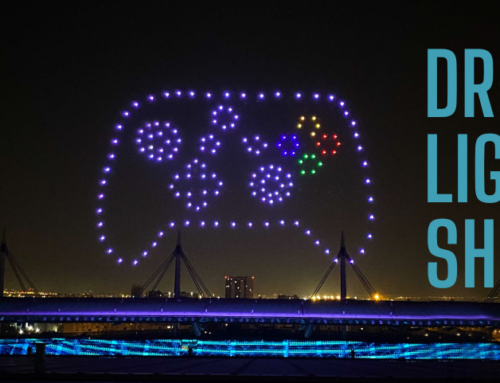In an ever-evolving world, safety and security are preeminent concerns across various industries, whether it’s ensuring the integrity of critical infrastructure or safeguarding against potential threats. The advent of drone technology has significantly facilitated inspections, by offering a myriad of advantages for safety and security. In this article, we focus on drone inspections of critical infrastructures (aerial thermography, visual monitoring, etc.) and explain the importance of meeting legal requirements.
In the landscape of energy deployment, management and maintenance, drones have sparked a transformative revolution especially as “supervisor”. Equipped with advanced imaging technologies such as high-resolution cameras and LiDAR sensors, drones can capture detailed aerial imagery and topographical data of solar PV systems with unparalleled accuracy and efficiency. Additionally, drone inspections can identify potential issues such as damage or malfunctioning components early on, allowing for timely maintenance or repairs, thus maximizing the efficiency and lifespan of energy systems and ultimately reducing waste and the need for replacement parts.
Safety Advantages of Drone Inspections of Critical Infrastructures
Drones can access hazardous or hard-to-reach areas without risking human safety. They can navigate through tight spaces, climb tall structures, or explore dangerous environments without putting human inspectors at risk. Additionally, drones can capture high-resolution imagery and data from various angles, providing a comprehensive view of the inspected area without the need for close distance. This reduces the likelihood of accidents or injuries that may occur during traditional human inspections. Moreover, drones can operate in adverse weather conditions or environments with poor visibility, further enhancing safety by eliminating exposure to harsh elements or hazardous situations for human inspectors.
Sustainability & Benefits of Drone Inspections of Critical Infrastructures
Drone inspections of critical infrastructures contribute to sustainability in several ways. Firstly, they reduce the need for manual work and heavy equipment, thus minimizing carbon emissions compared to traditional inspections involving human inspectors or specialized vehicles (e.g. helicopters). Secondly, drones can swiftly cover large areas, requiring less time and energy. Overall, drone inspections offer a more sustainable approach to monitoring and maintaining critical infrastructures by minimizing environmental footprint, maximizing efficiency, and prolonging the lifespan of renewable energy systems.
Risks Related to Drone Operations & EuroUSC expertise
Companies offering drone inspection services for photovoltaic infrastructures are well-versed in adhering to legal requirements for crucial reasons, encompassing safety, legal liability, ethical considerations, and the overall success of drone operations. Indeed, it’s essential to be aware of potential risks associated with the operation and implement effective risk management strategies. Here are some common risks related to drone inspections:
- Technical issues: malfunctions, system failures, or technical glitches in drones leading to accidents, damage, or loss of the drone.
- Airspace Congestion: collisions or interference with other aerial activities.
- Human Error: Errors in piloting, data analysis, or decision-making generating inaccurate inspections or operational mishaps.
When a drone operator plans operations that do not fall into the Open category or are not compliant with standard scenarios (STS) in the Specific category, operational authorization obtained through risk assessment (Pre-Defined Risk Assessment or SORA methodology) is required. For drone-in-box BVLOS operations performed and controlled by a Ground Control Station (GCS), a risk assessment is required. By identifying and addressing operational risks with the SORA methodology, as requested by the EU Regulation, organizations can enhance the safety, efficiency, and reliability of drone inspections, contributing to successful and responsible drone operations. As an active member of the SORA developing body JARUS WG-SRM, EuroUSC Italia can support operators in the risk evaluation process, indicating the best strategies to reduce the risk level and facilitating the following acquisition of the operational authorisation from the National Aviation Authority (NAA).
If your company is considering integrating drone activities into its business, we offer comprehensive support. Beyond the regulatory support, we assist in identifying the best possible solutions, including drone operators and manufacturers who can carry out the required tasks. Let us help you revolutionize your work and elevate your business to new heights!
Use case
Wesii has been focusing on the photovoltaic Industry since its establishment on aerial inspection and AI-based diagnosis services of photovoltaic modules. Its technical and innovative solution involves the use of drones and starting from 2021, also aircraft equipped with high-definition visual (‘RGB’) and thermal InfraRed (‘IR’) cameras for the thermographic analysis of photovoltaic panels. Thus, granting a high level of accuracy and allowing for the identification and geolocation of defects and faults affecting photovoltaic modules. This year, they started adopting a drone-in-box solution to monitor the progresses in the construction of new solar plants. A drone-in-a-box is a highly automated drone that resides within a charging station, often referred to as a “dock” or a “nest”. From this secure base, the drone can be deployed for missions as needed. After completing a mission, the drone returns to the dock to offload collected data and recharge itself. EuroUSC Italia has supported Wesii in identifying and mitigating the operational risks, developing the required documents in compliance with current EU and national regulations, assessing the intended airspace, and obtaining operational authorisation from NAA to start their activities.
“Drone-In-a-Box systems perfectly suit our needs for consistent and frequent monitoring” states Wesii CEO Mauro Migliazzi “We’ve been dreaming about implementing this solution in our product offer for several years, but there wasn’t enough need for frequent monitoring since we usually inspect each plant once/twice per year. With the launch of our construction monitoring service and the fact that many companies are now building new plants on vast areas, the demand for a way to keep track of the building progress on the whole site and certify the correct installation of the modules grew exponentially, making now the right time to invest our efforts in developing this solution”.
With the help of EuroUSC Italia Wesii developed his operational procedures and SORA analysis for drone-in-box operations for monitoring PV infrastructures. The operations will be conducted in the Specific Category under Operational Authorization issued by ENAC: it is the first one released for this type of application in Italy, and one of the few released in Europe for the controlling of the nest via a GCS located hundreds of kilometres from the actual flight location. A great result that rewards Wesii as one of the pioneers in commercial BVLOS operations.
In the energy sector, drones facilitate efficient inspections, identify maintenance needs, and enhance safety by reducing the need for human intervention in hazardous environments. The applicability of drone-in-box solutions extends far and wide. Many domains might adopt this solution moving from inspection of critical infrastructures to surveillance of buildings or areas. Ready to step up your monitoring game? Concerned about security? Drone in a Box might just be the solution you’re looking for, and we’ve got your back when it comes to obtaining the necessary authorizations and solutions. Contact us to: info@eurousc-italia.it.
WESII
Wesii is an Italian company born as a start-up in 2016 and operating worldwide to provide cutting-edge multispectral inspection services for a wide variety of scopes (from solar plants to landfill site monitoring, from agricultural to naval, and even sports). Its core business bases on the photovoltaic industry, thanks to a technical solution involving the use of manned aircrafts and drones and AI-based diagnosis services, inspecting more than 4 Giga Watts of solar panels every year.






